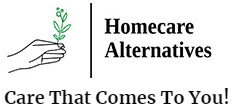An article entitled, “3 Anticipated Trends in Aging in 2024” from the University of Florida’s Department of Physiology and Aging ( https://online.aging.ufl.edu/2024/01/03/3-anticipated-trends-in-aging-in-2024/) highlights three major trends in aging expected for 2024:
-
Increased demand for elderly mental health care professionals
- COVID-19 has led to rising anxiety and depression among all age groups
- Seniors face challenges in finding trained professionals for their specific mental health needs
- There are issues with insurance coverage and financial resources for mental health services
-
Aging in place
- 77% of adults over 50 prefer to age in their current homes
- Services supporting aging in place include meal delivery, transportation, errands, and in-home care
- There may be an increased need for in-home geriatric healthcare workers
-
Resurgence of multigenerational housing
- Benefits include improved family relationships, easier care provision, financial advantages, and positive health impacts
- Gerontology professionals can support these families through caregiver training, home modification guidance, and support groups
Additional research and insights support these trends:
-
Growing demand for elderly mental health care:
The need for mental health services for older adults is indeed rising. According to the World Health Organization, approximately 15% of adults aged 60 and over suffer from a mental disorder. Depression, in particular, affects around 7% of the older population.
A study published in the American Journal of Geriatric Psychiatry found that the COVID-19 pandemic exacerbated mental health issues among older adults, with increased rates of depression, anxiety, and loneliness. This highlights the urgent need for more mental health professionals specializing in geriatric care.
To address this growing demand, some initiatives are being implemented:
- The American Psychological Association has a special interest group focused on adult development and aging to promote research and training in this area.
- Some universities are offering specialized programs in geriatric mental health, such as the Hartford Center of Excellence in Geriatric Psychiatry at the University of California, San Diego.
-
Aging in place:
The desire to age in place is a strong trend that extends beyond the United States. A global survey by Knight Frank found that 76% of people over 55 want to stay in their current home as they age.
Technology is playing an increasingly important role in supporting aging in place:
- Smart home devices can enhance safety and independence, such as fall detection systems, medication reminders, and voice-activated assistants.
- Telehealth services are becoming more accessible, allowing older adults to consult with healthcare providers remotely.
- Wearable devices can monitor vital signs and alert caregivers or emergency services if needed.
The economic impact of aging in place is significant. A report by the AARP Public Policy Institute found that keeping older adults in their homes could save Medicaid $30 billion annually in the United States.
-
Multigenerational housing:
The trend towards multigenerational living is indeed growing. According to Pew Research Center, a record 64 million Americans lived in multigenerational households in 2016, and this number has likely increased since then.
Some additional benefits of multigenerational living include:
- Reduced social isolation for older adults
- Shared household expenses
- Increased family bonding and intergenerational learning
- Built-in childcare for families with young children
To support this trend, some home builders are now offering designs specifically for multigenerational living, featuring separate entrances, kitchenettes, and living spaces within a single home.
Challenges of multigenerational living include:
- Potential for conflicts due to different lifestyles and expectations
- Need for privacy and personal space
- Adapting homes to accommodate different generations’ needs
These trends in aging reflect broader societal changes and the need for innovative solutions to support our aging population. As we move into 2024 and beyond, it will be crucial to address the mental health needs of older adults, provide better support for aging in place, and create environments that facilitate multigenerational living. These trends present opportunities for professionals in gerontology, healthcare, technology, and urban planning to work together to improve the quality of life for older adults and their families.


 RSS - Posts
RSS - Posts